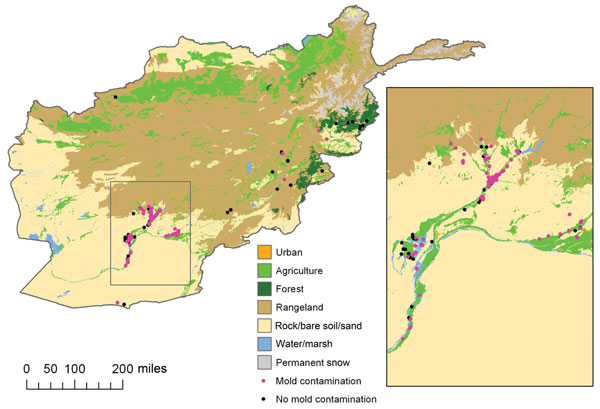Volume 21, Number 10—October 2015
Research
Environmental Factors Related to Fungal Wound Contamination after Combat Trauma in Afghanistan, 2009–2011
Figure 3

Figure 3. Geographic features of southern and eastern Afghanistan study zones, 2009–2011. Inset shows detail view of southern Afghanistan region where most cases originated. Because injuries frequently occurred in close proximity, some points overlay other points. The mold contamination points are on top.
1A portion of this material was presented at the Military Health System Research Symposium, August 18–21, 2014, Fort Lauderdale, Florida, USA.
Page created: September 22, 2015
Page updated: September 22, 2015
Page reviewed: September 22, 2015
The conclusions, findings, and opinions expressed by authors contributing to this journal do not necessarily reflect the official position of the U.S. Department of Health and Human Services, the Public Health Service, the Centers for Disease Control and Prevention, or the authors' affiliated institutions. Use of trade names is for identification only and does not imply endorsement by any of the groups named above.